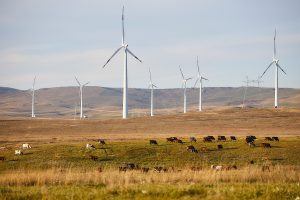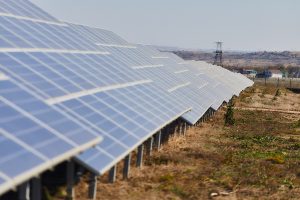Today, the world is already gaining momentum in the global energy transition – this is a significant structural change in the energy system, which allows to reduce greenhouse gas emissions. One of the key technologies is renewable energy sources (RES).
To date, RES is the most environmentally friendly and safe energy production technology. According to IPCC estimates, wind and solar power can provide the largest contribution to reducing greenhouse gas emissions in the energy sector by 2030. According to this indicator, they are significantly ahead of, for example, nuclear energy. In addition, renewable energy sources are safer than nuclear power plants, the risks of accidents at which are increasing due to the manifestations of climate change. For example, overheating of reactors due to heat waves or flooding of nuclear power plants during a flood. In addition, in many countries of the world, it is the wind and the sun that can provide the cheapest electricity.

Wind power plants in Kabardino-Balkaria. Photo: Slava Zamyslov/GreenpeaceTo assess how renewable energy is better than coal or gas energy, it is necessary to calculate greenhouse gas emissions throughout the entire life cycle of each energy source. As a result, it turns out that a solar power plant will have 17-30 times less impact on the climate than a coal one, and a wind power plant – 68-75 times less.
Green energy is also developing in Russia, but very slowly. The share of electricity generation from RES in our country is less than 1%. Every day, renewable energy sources – small hydro, solar, wind, geothermal and biogas – provide electricity to hundreds of thousands of households. More than 200 green energy facilities can be found on the Greenpeace map. This year, the increase in RES was provided by new large solar power plants launched in different parts of our country – from the Trans-Baikal Territory to Dagestan.
 Solar panels in Kabardino-Balkaria. Photo: Slava Zamyslov / GreenpeaceBut in addition to large objects, anyone can generate energy. Such a process, when electricity is produced by low-power facilities near the place of consumption, is called microgeneration. We talked about how a hospital with solar panels on the roof works and how a village lives on an autonomous power supply from the sun.
Solar panels in Kabardino-Balkaria. Photo: Slava Zamyslov / GreenpeaceBut in addition to large objects, anyone can generate energy. Such a process, when electricity is produced by low-power facilities near the place of consumption, is called microgeneration. We talked about how a hospital with solar panels on the roof works and how a village lives on an autonomous power supply from the sun.

 Русский
Русский Тоҷикӣ
Тоҷикӣ